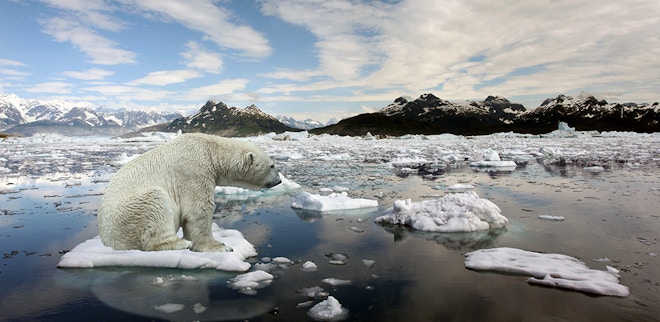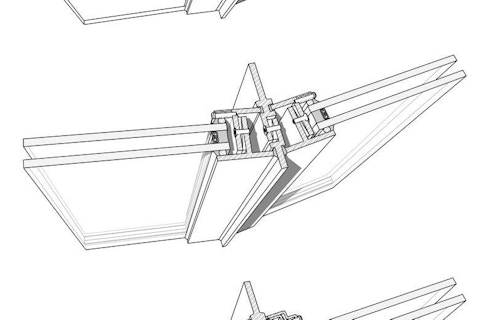Drawdown: Paul Hawken Gets Real with Climate Change

At roughly the same time as the Mauna Loa reading comes Drawdown: The Most Comprehensive Plan Ever Proposed to Reverse Global Warming. Edited by author, entrepreneur, ecological consultant and activist, Paul Hawken, Drawdown is an upbeat, credible, practical and convincing solution narrative that is both hope-restoring and empowering.
Drawdown is the point at which civilization starts removing more carbon from the atmosphere than it is producing, an important milestone, certainly, involving strategies to re-sequester carbon. It is not enough to simply slow the rate of carbon pumping into the atmosphere, or even to stop it altogether. It is necessary to begin to remove carbon from the atmosphere. A cadre of some 200 scientists and researchers worldwide have identified and modeled solutions for accomplishing this. One hundred of these solutions are ranked and chronicled as the book’s content. In the US, California leads the charge in climate change mitigation. Many of these solutions have been successfully implemented in this, the sixth largest economy in the world. The book explores these same solutions at global scale, along with a host of others relevant to both developed and developing economies.
The solutions themselves are both familiar and surprising, spanning technology, ecology and sociology. Market-ready technologies like wind, solar, and smart grids are discussed in the context of their latest applications and economic scalability. Agroforestry, regenerative grazing and land use are explored. Lifestyle issues like diet (eat plants!), and access to education and family planning emerge as critical social change agents (one section is devoted to women and girls). And of course, the role of the built environment is prominent; an entire section on “Buildings and Cities” addresses net-zero buildings, walkable cities, green roofs, district heating, insulation, smart glass, retrofitting, building automation and more.

Spoiler alert! So, what do you think is the number-one ranked solution strategy? Refrigerant management. We are familiar with the cooling loads in buildings and the accompanying energy consumption required to meet those loads. Air-conditioning went from luxury to commodity in less than a century in the US, with uptake now occurring much faster in developing economies. But it isn’t the energy consumed in operating refrigeration equipment that is the biggest problem with respect to global warming potential. It’s the refrigerants themselves, the hydrofluorocarbons (HFCs) with an atmospheric warming potency that is one to nine thousand times greater than actual carbon dioxide. Ninety percent of HFC emissions occur at end of life because equipment is not properly disposed of and the HFCs recovered and recycled. Bucky Fuller noted back in the mid-twentieth century that humanity faced not so much a resource problem as a management problem: how to develop, distribute, recycle and regenerate the resources required to feed, shelter and house a population growing exponentially. This is a common thread in the 100 solution strategies discussed in Drawdown, and the book makes apparent that the problem of climate change is, in fact, manageable. But still, the will to manage the problem must also manifest.
90% of HFC emissions occur at end of life because equipment is not properly disposed of and the HFCs recovered and recycled.
Drawdown is more than a book, it is a movement with the book as a living roadmap. Each solution is supported by additional data and discussion on the Drawdown website. Drawdown is a community where the will to manage the problem of climate change may be found. Drawdown is a portal to a potential future where humanity learns to live in harmony with nature.

Mic Patterson, PhD, LEED AP BD+C
Ambassador of Innovation and Collaboration
Facade Tectonics Institute
Send Email
Mic Patterson is a designer, researcher, educator, futurist, author, photographer and entrepreneur. He has concentrated his professional and academic career on advanced facade technology and sustainable building practices. He pioneered the introduction of structural glass facade technology in the United States in the 1990s, implementing diverse and novel applications including cable trusses, cable nets and grid shells. Patterson was among the founding group of the Advanced Technology Studio of Enclos, where he works as the Vice President of Strategic Development. He is a co-founder of the Facade Tectonics Institute and serves on the steering committee, and co-founder of the Facades+ conference series. He is on the technical research committee for GlassCon Global and a member of the Advisor Group for the Council for Tall Buildings and Urban Habitat. He has twice been named among the industry’s most influential by US Glass magazine. Patterson is a Ph.D. candidate in the School of Architecture at the University of Southern California with a research focus on sustainable facade renovation practices. He has taught, written extensively, and lectured internationally on diverse aspects of advanced facade technology. He is the author of Structural Glass Facades and Enclosures, published by Wiley.
Publisher’s note: The views expressed here are those of the author, and do not necessarily reflect those of, nor are they endorsed by, the Facade Tectonics Institute.
Looking for something specific?
Search our extensive library.
FTI’s SKINS email is the central source for the latest in building skin trends and research.
All emails include an unsubscribe link. You may opt out at any time. See our privacy policy.









